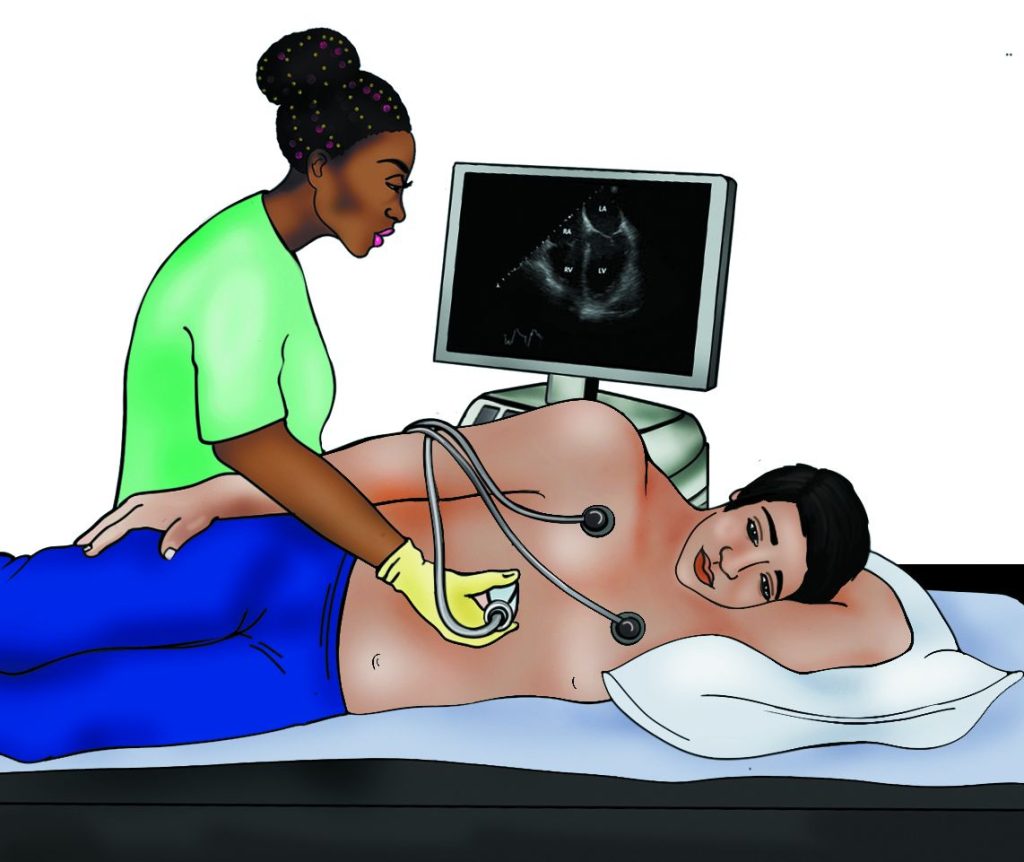
This is an ultrasound scan of the heart and it is harmless. Echocardiograms are usually done in hospital, sometimes in community centres. A full study usually takes 30-45 minutes. During the test an ultrasound probe is placed on the chest and moving pictures of the heart are taken.
The echocardiogram not only diagnoses valve disease, it usually suggests the underlying cause. It establishes how severe the disease is and also what effect it is having on parts of the heart, particularly the left ventricle (main muscle pump of the heart).
It is performed by pressing a round flat probe (like the end of a stethoscope) firmly on a number of positions around the centre and left-side of the chest. This probe transmits then receives ultrasound from the structures of the heart to build up a moving picture on a monitor screen. It clearly shows thickening, “wear”, damage or inefficiencies in any of the four valves. It also uses the Doppler shift effect to measure how blood is flowing.. If the audio monitor is turned on, the tell-tale “whooshing” sounds of blood flow can always be heard and these are usually normal, although the sound changes s with heart valve disease.
A word on who does the scan. In the UK 9 out of 10 of scans are done by physiologist/scientists and the rest by doctors. In most parts of mainland Europe cardiologists do most of the scans. In the US the scans are done by sonographers and interpreted by cardiologists.
Most people do not realise that physiologist/scientists are not medically trained so will not usually be able to give you medical information about your results. Having said that there are some senior physiologist/scientists in specialist valve clinics who will have received extra training ‘on the job’ and may therefore be able to give you information.
The person you see should introduce themselves and explain what they can and cannot tell you at the end of the test. A lot of physiologist/scientists are still taught not to give out information at the end of the test. This can make people nervous and even a little suspicious that something is being hidden but it is only routine; the doctor requesting the test is the one to discuss the results with you.
Once valve disease is detected and fully assessed, it is usually necessary to repeat the scan at regular intervals. How often this is, depends on the type and severity of valve disease.
